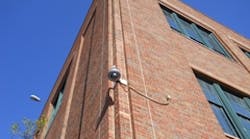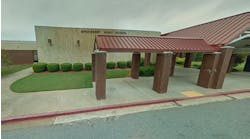The month of April has a grim track record for deadly violence on school and university campuses. On April 20, 1999, students Eric Harris and Dylan Klebold, armed with guns and bombs, launched an attack on teachers and fellow students at Columbine High School in Jefferson County, Colo. They killed 12 students and one teacher, and wounded 23 others before committing suicide. On April 16, 2007, Virginia Tech student Seung-Hui Cho carried out the most deadly shooting spree on a U.S. campus when he shot 32 people to death on the Blacksburg campus and then took his own life.
Now, April 2012 has a chapter in that disturbing legacy. On April 2, One L. Goh, a former student apparently embittered about his experience at Oikos University in Oakland, Calif., returned to the campus. He allegedly began shooting; a secretary and six students were killed, and three others were wounded.
Outbreaks of violence at education institutions typically do not rise to the horrific levels of Virginia Tech, Columbine or Oikos. But incidents that threaten school security—bullying, hazing, online harassment—take place in every month of the year and may occur in any classroom or campus from coast to coast. Schools and universities have taken numerous steps over the years to create safer learning environments, deter violence, detect troublesome behavior before it becomes life-threatening, and put plans in place to respond to emergencies. The efforts won’t eliminate violence and criminal behavior from schools, but every incident that befalls an education institution provides administrators with another opportunity to see what lessons can be learned to make the learning environment safer for students, staff members and visitors.
Keeping watch
Over the years, violent episodes have occurred at some education institutions when an intruder has been able to get inside a school. In response, schools have taken steps that make it more difficult for people to enter facilities without permission and make it easier to detect those who do get inside.
The federal government’s "Indicators of School Crime and Safety: 2011" says that in the 2009-10 school year, 99 percent of public schools require visitors to check in or sign in. Some schools have systems that conduct an immediate criminal background check on visitors before they are allowed in.
Other steps schools are using to maintain control of who is in their buildings:
•Controlled access to school buildings during school hours: 92 percent.
•Controlled access to school grounds during school hours: 46 percent.
•Students required to wear badges or photo identification: 7 percent.
•Faculty and staff required to wear badges or photo identification: 63 percent.
•Use of security cameras to monitor schools: 61 percent (at high schools, the figure rises to 84 percent).
•Random metal detector checks: 5 percent.
•Daily metal detector checks: 1 percent.
Caught on video
The likelihood of getting caught is a factor would-be troublemakers take into account before engaging in out-of-bounds behavior. On a spacious campus, in a large facility, where hundreds or thousands of students may go about their business in relative anonymity, school security staff may find it difficult to monitor all the potential trouble spots or those tempted to create problems.
The widespread availability of inexpensive, more powerful video technology has enabled education institutions to even the playing field in the battle for campus safety. People who know their actions may be recorded on a surveillance system may decide to rein in their inappropriate impulses, and many schools and universities have blanketed the inside and outside of their facilities with cameras so that few areas are beyond the reach of the watchful eyes of security officers.
The ability to transmit video images over an education institution’s computer network and to record images digitally rather than on bulky and space-eating tapes has made it possible for schools to monitor more locations in real time, gain access to images from remote locations, and track down archived video more quickly.
The extent of video surveillance on some school campuses has made some privacy advocates uneasy, but education administrators who have placed a high priority on campus safety have seen that the surveillance has improved the climate for learning in schools.
In Chicago, the school district began using security cameras in 1999 and now has more than 7,000 analog cameras in 268 of its more than 600 schools. In 2010-11, officials decided to step up security at one of its more crime-plagued high schools. After numerous high-definition cameras were installed at Fenger High School, administrators reported that misconduct cases declined 59 percent compared with the previous year, and the number of arrests dropped by 69 percent. The dropout rate at Fenger dropped from 19 percent to 5 percent.
Those numbers prompted officials to install the high-definition system at 14 more high schools that officials say have high numbers of misconduct, arrests or reports of crime. The system, now in place, has between 50 and 80 high-definition security cameras at the 14 schools.
"We need to provide instructional supports to help teachers and principals drive student growth in the classroom, and building a safer learning climate goes hand in hand with those efforts," says Chicago Schools CEO Jean-Claude Brizard. "We hope that (the) high schools benefitting from these security cameras will experience similar results to those that helped move Fenger in the right direction."
Get the word out
Following the 2007 shootings at Virginia Tech, much of focus was on whether those on campus had received adequate warning about what was occurring. Cho had entered a residence hall at about 7:15 a.m. and killed two students. More than two hours later, Cho unleashed a second round of deadly violence, killing another 30 people in Norris Hall, an academic building elsewhere on the Blacksburg campus. University officials, believing at the time that the residence hall shootings were an isolated incident, did not notify people on campus about the first shootings for about two hours and did not issue a warning for people to stay inside or take specific precautions.
(The U.S. Education Department fined Virginia Tech $55,000 for failing to issue a timely warning that day to those on campus, but last month, an administrative judge ruled that the warning was timely and overturned the fine. "A notification that came more quickly may have prevented or mitigated the losses that occurred at Norris Hall," Judge Ernsest Canellos wrote. "While incredibly tragic, the fact that it did not come soon enough to possibly protect some individuals from losing their lives does not mean that Virginia Tech’s email was not sent in a reasonable amount of time so as to satisfy the timeliness requirement.")
In the years that have followed, Virginia Tech and scores of other schools and universities have intensified their efforts to notify students, employees and others connected to their institutions about incidents that threaten the safety and security of people and property on their campuses. Improvements in technology have enhanced the ability of institutions to deliver information quickly to those who need to know.
The notification system at Virginia Tech (known as VT Alerts) disseminates messages numerous ways: Information is posted on the university’s web page; emails are sent to all students, staff and faculty with vt.edu accounts; messages are displayed on electronic boards in classrooms and on loudspeakers on campus; sirens on campus alert people that an alert has been issued; warnings also can be heard on the university’s weather/emergency hotline.
Those who have the appropriate software and have their computers logged on and connected to the Internet will receive desktop alerts of emergency messages. Students, employees and others affiliated with the university also may sign up to receive text or voice alerts on their phones. Emergency messages also are disseminated on three different university Twitter feeds and are posted on Virginia Tech’s Web page.
Prevention
In addition to equipment and procedures that help schools and universities deter unwanted behavior and deal with crises that do arise, educators also have focused on programs that try to identity potential problems before they occur and resolve issues before they erupt into violence.
The U.S. Centers for Disease Control and Prevention (CDC) says violence prevention programs at schools can be broken down into four levels of strategies: individual, relationship, community and societal:
•Individual. School-based prevention programs reduce rates of aggression and violent behavior among students, the CDC says. Such programs may focus on areas such as emotional self-awareness, emotional control, self-esteem, positive social skills, social problem solving, conflict resolution and teamwork
•Relationship. Prevention programs should incorporate strategies designed to promote more positive connections between youth and their peers, teachers and families. Students encouraged to be active bystanders are more likely to intervene to stop school violence. Enhancing parent involvement in academic and social aspects of their children’s school experiences improves family cohesion and connections, the CDC says.
•Community. These strategies focus on modifying community characteristics, including school settings that either promote or inhibit violence. Improved classroom management practices, promoting cooperative learning techniques, teacher/staffing practices, student monitoring and supervision can reduce violence or other negative outcomes. Communities can also help decrease violence through after-school or mentoring programs, or recreational activities
•Societal. Strategies that may facilitate lasting change include addressing social norms in schools and reforming educational systems and policies at the institutional level.
Sidebar: Stopping bullies
Violent episodes with multiple fatalities draw the public’s attention to school security and how it can be improved, but those are rare events that most education administrators will never have to experience.
A more common occurrence that can undermine a student’s sense of security at school is bullying. Victims of physical bullying such as hazing can be injured or worse. Students victimized by verbal bullying—teasing or rumor mongering— may see their school performance deteriorate and become prone to depression. As young people turn in greater numbers to text messaging, Facebook and Twitter to communicate with one another, "cyberbullying" has found its way to those platforms as well.
At its worst, bullying results in tragedy:
•In 2010, Phoebe Prince, a 15-year-old girl who had recently moved from Ireland to South Hadley, Mass., committed suicide after being subjected to taunting and harassment from other students at her high school.
The girl’s death resulted in state lawmakers enacting stronger anti-bullying laws. Several students involved in bullying Phoebe were placed on probation after pleading guilty to harassment.
•Also in 2010, Tyler Clementi, an 18-year-old freshman at Rutgers University, committed suicide after his college roommate used a laptop computer camera to stream images of Clementi kissing another man. The roommate, Dharun Ravi, also sent Twitter messages that let others know he was spying on Clementi. Ravi was tried and convicted of violating Clementi’s privacy and bias intimidation.
•In 2011, Robert Champion, a 26-year-old drum major in the marching band at Florida A&M University, died after enduring multiple blunt force trauma in a hazing ritual on a bus after a football game in Orlando. A criminal investigation of the death is continuing.
The growing concern about the effects of bullying has prompted the federal departments of Education and Health and Human Services to re-launch a "Stop Bullying" website (www.stopbullying.gov). It provides school systems, students and their families with information and tools to combat bullying and protect potential victims.
"Bullying can no longer be seen somehow as a normal rite of passage," Education Secretary Arne Duncan says. "… We must improve the climates in our schools and in our communities for all youth."
The site has details about anti-bullying laws and policies in all 50 states, describes who is at risk for bullying, and lists the signs that bullying victims and their tormenters might exhibit.
The site urges schools to consider several steps to combat bullying:
•Conduct assessments in your school to determine how often bullying occurs, where it happens, and whether your prevention efforts are working.
•Launch an awareness campaign to make anti-bullying objectives known to the school, parents and community members.
•Establish and widely disseminate a code of conduct, school-wide rules, and a bullying reporting system.
•Use staff meetings, assemblies, class and parent meetings, newsletters to families, the school website, and the student handbook to establish a positive climate at school.
•Build bullying prevention material into the curriculum and school activities. Train teachers and staff on the school’s rules and policies. Give them the skills to intervene consistently and appropriately.
Sidebar: Security vs. Convenience
Higher-education institutions have a responsibility to provide a safe and secure campus even though the students they are charged with protecting may find such measures intrusive and inconvenient.
A study commissioned last year by Ingersoll Rand Security Technologies found that students’ perspective on campus security differs significantly from the perspective of administrators and security personnel.
"Security and safety departments concentrate on access-control tasks," says the report, "Security and Convenience—a Paradox on Campus." "Students emphasize convenience and flexibility. Universities and technology companies should address these paradoxical needs on campus as they plan for the future."
For instance, the report notes, a student may consider holding a door open to allow someone access to a residence hall a matter of courtesy and convenience; an administrator trying to prevent intruders from circumventing a security system is more likely to view the act as a breakdown that could jeopardize campus safety.
"Students generally feel safe on campus and are typically not concerned unless an incident occurs," the report says.
Other findings by researchers:
•92 percent of students say they feel safe on their campuses.
•Of the 8 percent that say they do not feel safe, 84 percent are women.
•Of the many types of credentials to manage identities on campuses, a photo ID card is the most common; 78 percent of campuses say they employ picture ID cards; 75 percent use a magnetic stripe card; 51 percent use mechanical keys; 43 percent use bar codes on a card; 31 percent use a proximity card; 16 percent use a proximity fob or token; 10 percent use biometrics; and 9 percent use smart cards.
•Only 18 percent of higher-education administrators believe their institutions are very effective at granting or denying access to appropriate people (49 percent say their institutions are somewhat effective, and 10 percent say their institutions are either somewhat ineffective or not effective).
•5 percent of higher-education institutions still must manually lock some points of access on campus to achieve a campuswide lockdown.
"They feel they are less likely to lose their phone," the report says. "Plus, they know that ID cards are shared; phones are not."
91 percent of students say they keep their cell phones within arm’s reach day and night; 67 percent say they would like to be able to use their cell phones as their campus credentials instead of ID cards or other systems.
Kennedy, staff writer, can be reached at [email protected]. Follow him on Twitter @SchoolhouseBeat.



